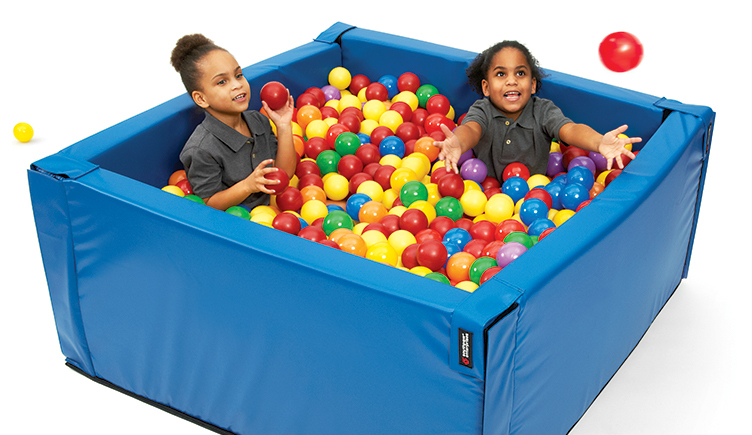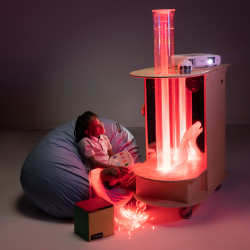What is Emotional Regulation?
Emotional regulation is “the ability of the individual to control one’s conscious and unconscious emotions in a way the meets the demand of the environment and the individual’s goal.” For example, a child playing basketball with a friend loses, but he controls his emotions so his friend will play with him again. This skill is critical to long-term emotional health and well-being. (O’Brien & Kuhaneck, 2020, pp746)
Why do we need Emotional Regulation?
We need to be emotionally well in order to participate in our occupations and activities. According to the American Occupational Therapy Association, “Occupations are various kinds of life activities in which individuals, groups, or populations engage, including activities of daily living, instrumental activities of daily living, rest and sleep, education, work, play, leisure, and social participation.” (AOTA, 2014) These are meaningful activities that bring us satisfaction, stability, good health and well-being, and joy.
Interventions that Support Emotional Regulation
There are many strategies and interventions that can support clients with emotional regulation difficulties, including sensory-based strategies, behavioral approaches, general emotional regulation strategies, improvements in self-efficacy and cognitive behavioral approaches. (O’Brien & Kuhaneck, 2020, pp748-756)
Sensory strategies can include using a sensory diet to improve behavior and emotional regulation for participating in home and community. Sensory diets can help individuals feel more alert or calm by preemptively providing sensations within the daily routine. Activities such as doing yoga poses before homework or eating a chewy healthy snack before math can help. Placing Southpaw’s Rollerball Blend on an individual can provide a calming lavender scent when calm focusing on the task at hand is needed.
Behavioral approaches are helpful as they provide positive reinforcement for emotional reactions that are preferred (i.e., helping a friend, raising a hand in class, etc.). “Baltruschat et al. (2011) found that explicit prompting and positive reinforcement are effective in improving executive function skills and are maintained when removed.” Strategies in this area can include reward systems, first-then boards, contracts, praise and daily schedule boards. (Obrien & Kuhaneck, 2020, pp753)
General emotional regulation strategies include deep breathing and communicating the need for intermittent sensory breaks. Using Southpaw’s Blow Toy Kit can be a fun way to encourage deep breathing, a strategy that engages the midbrain to regulate the arousal level. Teaching individuals to request sensory-based breaks appropriately can also be strategy for success. (Obrien & Kuhaneck, 2020, pp747) Utilizing Southpaw’s GoTalk Button can help individuals with limited speech and language ask for the break that will help them remain regulated and focused during important tasks and occupations.
Building self-efficacy in clients can help create pride and higher self-esteem. To help improve an individual’s self-value and confidence, we can encourage them to try new things and provide controlled choices. (Obrien & Kuhaneck, 2020, pp748)
Finally, cognitive behavioral approaches can aid people in the quest for emotional regulation. Encouraging a person to identify negative thoughts that affect achievement and then teaching positive self-talk can help facilitate their success in the mastery of occupations and activities. (Kuypers, 2019)
In conclusion, as occupational therapists and other health and education professionals, it behooves us to help enhance our clients’ abilities to regulate themselves emotionally. This capability can lead them to greater quality time participating in occupations and activities that bring them joy, wellness and overall fulfillment.
REFERENCES
Kuypers, Leah M. The Zones of Regulation: A Curriculum Designed to Foster Self-Regulation and Emotional Control. Langara College, 2019.
O'Brien, Jane Clifford, and Heather Miller-Kuhaneck. Case-Smith's Occupational Therapy for Children and Adolescents. Mosby, 2020.
OT-Practice-Framework-Table-1-Occupations.pdf.” AOTA, 2014, https://www.aota.org/~/media/Corporate/Files/Advocacy/Federal/coding/OT-Practice-Framework-Table-1-Occupations.pdf
Pathway2success. “How to Teach Positive Self-Talk.” The Pathway 2 Success, 18 July 2018, www.thepathway2success.com/how-to-teach-positive-self-talk/.
“Sensory Strategies for Self-Regulation, Stress and Calming.” EMentalHealth.ca Resource Directory, https://www.ementalhealth.ca/Canada/Sensory-Strategies-for-Self-Regulation-Stress-and-Calming/index.php?m=article&ID=62537



